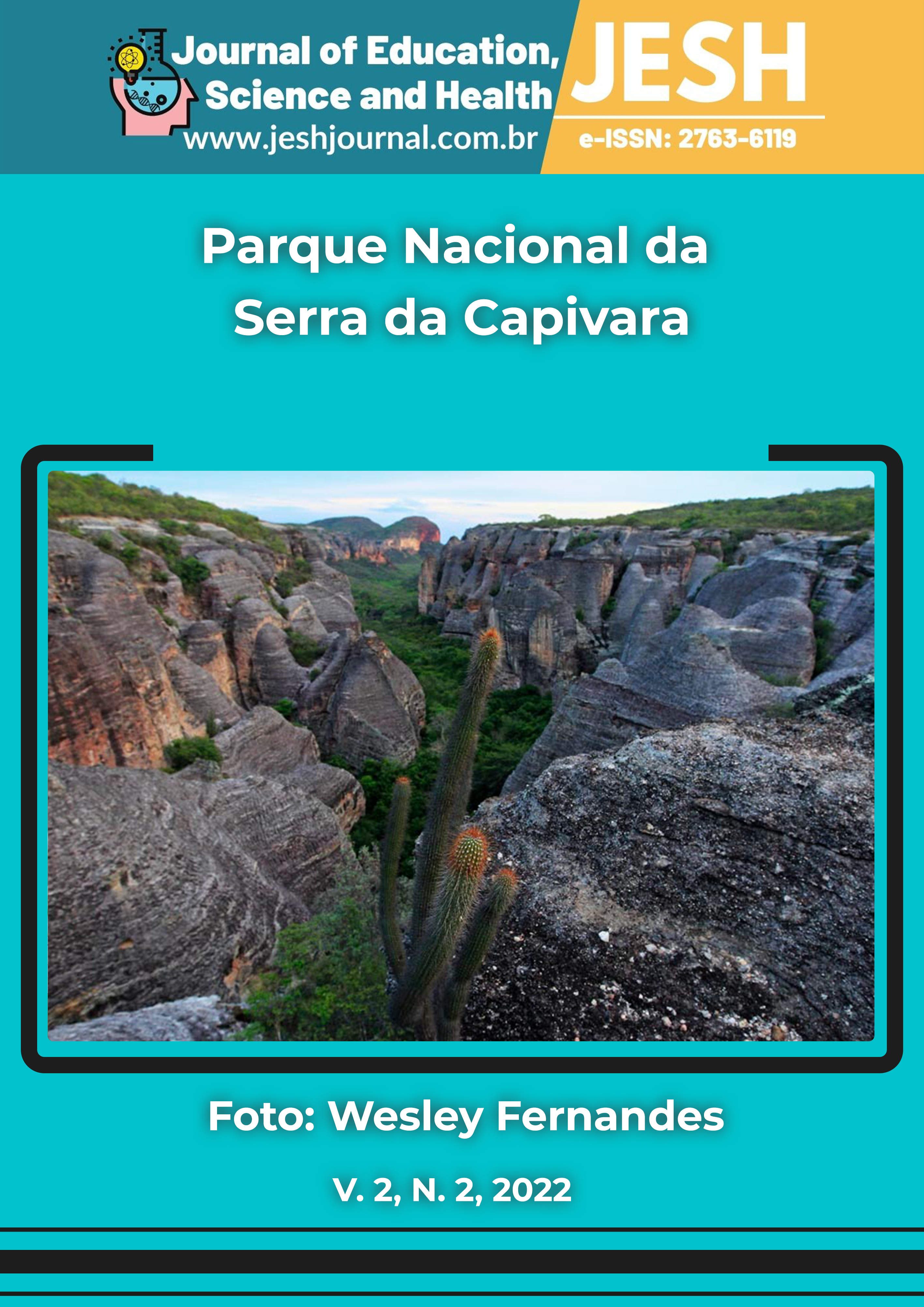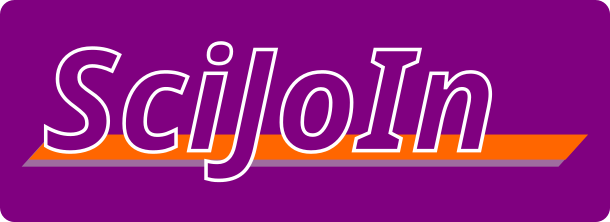ANALYSIS OF THE INTERACTION OF THE CONTAMINANT METHYLMERCURY WITH HEMOGLOBIN FROM THE FISH MATRINXÃBrycon cephalus (GÜNTHER, 1869)
Analysis of the interaction of the contaminant methylmercury with hemoglobin from the fish matrinxã Brycon cephalus (Günther, 1869)
DOI:
10.52832/jesh.v2i2.132Keywords:
Contaminantes, Mercúrio, Peixes, ToxicidadeAbstract
Environmental damage due to an unbalanced environment causes problems that are often irreversible for the biota. The increase in population triggers an increase in industrial production and consumption, and often both industries and individuals do not properly dispose of their waste, causing contamination in the air, soil and water. In water, contaminants can undergo the process of bioaccumulation and bimagnification, reaching humans through the consumption of fish, for example. Methylmercury is a toxic form of mercury, being highly polluting and contaminating when in contact with living beings. The objective of this research was to verify the pattern of interaction between methylmercury and hemoglobin in the fish Brycon cephalus through molecular docking. The binding free energy obtained for the hemoglobin-methylmercury complex was -2.0 kcal/mol. Six hemoglobin amino acids were involved in binding to methylmercury, namely: Valine, Serine, Leucine Arginine and Phenyalanine. Molecular docking indicated the tendency of mercury to bind to hemoglobin Brycon cephalus, which can damage metabolism. Thus, new complementary experiments (in vitro and in vivo) should occur to evaluate the possible toxic effect of methylmercury on this species.
Downloads
Metrics
References
Berman, H. M. (2000). The Protein Data Bank. Nucleic Acids Research, 28(1), 235–242. https://doi.org/10.1093/nar/28.1.235 DOI: https://doi.org/10.1093/nar/28.1.235
Bolton, E. E., Wang, Y., Thiessen, P. A., & Bryant, S. H. (2008). PubChem: Integrated Platform of Small Molecules and Biological Activities. Annual Reports in Computational Chemistry, 217–241. https://doi.org/10.1016/s1574-1400(08)00012-1 DOI: https://doi.org/10.1016/S1574-1400(08)00012-1
Chan, P. H. Y., Chan, M. H. M., Li, A. M., Cheung, R. C. K., Yu, X. T., & Lam, H. S. (2018). Methylmercury levels in commonly consumed fish and methylmercury exposure of children and women of childbearing age in Hong Kong, a high fish consumption community. Environmental Research, 166, 418–426. https://doi.org/10.1016/j.envres.2018.06.033 DOI: https://doi.org/10.1016/j.envres.2018.06.033
Donald, D. B., Wissel, B., & Anas, M. U. M. (2015). Species-specific Mercury bioaccumulation in a diverse fish community. Environmental Toxicology and Chemistry, 34(12), 2846–2855.https://doi.org/10.1002/etc.3130 DOI: https://doi.org/10.1002/etc.3130
Gimenes, T. C., Penteado, J. O., dos Santos, M., & da Silva Júnior, F. M. R. (2021). Methylmercury in Fish from the Amazon Regiona Review Focusedon Eating Habits. Water, Air, &SoilPollution, 232(5). https://doi.org/10.1007/s11270-021-05151-x DOI: https://doi.org/10.1007/s11270-021-05151-x
Gadelha, E. S., Araújo, J. C. (2013). Criação de Matrinxã em cativeiro. Pubvet 7(5). DOI: https://doi.org/10.22256/pubvet.v7n5.1507
Hanwell, M. D., Curtis, D. E., Lonie, D. C., Vandermeersch, T., Zurek, E., & Hutchison, G. R. (2012). Avogadro: an advanced semantic chemical editor, visualization, and analysis platform. Journal of Cheminformatics, 4(1). https://doi.org/10.1186/1758-2946-4-17 DOI: https://doi.org/10.1186/1758-2946-4-17
Hsu-Kim, H., Kucharzyk, K. H., Zhang, T., Deshusses, M. A. (2013). Mechanisms Regulating Mercury Bioavailability for Methylating Microorganisms in the Aquatic Environment: a critical review. Environmental Science & Technology, 47(6), 2441-2456. http://dx.doi.org/10.1021/es304370g. DOI: https://doi.org/10.1021/es304370g
Lescord, G. L., Johnston, T. A., Branfireun, B. A., Gunn, J. M. (2018). Percentage Of Methylmercury In The Muscle tissue of freshwater fish varies with body size and age and among species. Environmental Toxicology And Chemistry, 37(10), 2682-2691. http://dx.doi.org/10.1002/etc.4233. DOI: https://doi.org/10.1002/etc.4233
Li, P., Feng, X., Qiu, G. (2010). Methylmercury Exposure and Health Effects from Rice and Fish Consumption: a review. International Journal Of Environmental Research And Public Health, 7(6), 2666-2691. http://dx.doi.org/10.3390/ijerph7062666. DOI: https://doi.org/10.3390/ijerph7062666
Lima, F. C. T. (2003). Subfamily Bryconinae (Characins, Tetras). In: Reis, R. E, Kulander, S. O, Ferraris-Júnior, C. J., editors. Check list of the freshwater fishes of south and Central America. Porto Alegre: EDPUCRS; 174–181.
Moriarity, R. J., Liberda, E. N., Tsuji, L. J. S. (2020). Subsistence fishing in the Eeyou Istchee (James Bay, Quebec, Canada): a regional investigation of fish consumption as a route of exposure to methylmercury. Chemosphere, 258, 127413. http://dx.doi.org/10.1016/j.chemosphere.2020.127413. DOI: https://doi.org/10.1016/j.chemosphere.2020.127413
O'boyle, N. M., Banck, M., James, C. A., Morley, C., Vandermeersch, T., Hutchison, G. R.(2011). Open Babel: An open chemical toolbox. Journal of Cheminformatics. 3, 01-33. https://doi.org/10.1186/1758-2946-3-33 DOI: https://doi.org/10.1186/1758-2946-3-33
Pettersen, E. F., Goddard, T. D., Huang, C. C., Couch, G. S., Greenblatt, D. M., Meng, E. C., Ferrin, T. E. (2004). UCSF Chimera--a visualization system for exploratory research and analysis. JournalofComputationalChemistry, 25(13), 1605-1612, 10.1002/jcc.20084. DOI: https://doi.org/10.1002/jcc.20084
Pizango-Paima, E. G., Pereira-Filho, M., Oliveira-Pereira, M. I. (2001). Composição corporal e alimentar do matrinxã, Brycon cephalus, na Amazônia Central. Acta Amazonica, 31(3), 509–520. DOI: https://doi.org/10.1590/1809-43922001313520
Schartup, A. T.; Qureshi, A.; Dassuncao, C.; Thackray, C. P.; Harding, G.; Sunderland, E. M. (2018). A Model for Methylmercury Uptake and Trophic Transfer by Marine Plankton. Environmental Science & Technology, 52(2), 654-662. http://dx.doi.org/10.1021/acs.est.7b03821. DOI: https://doi.org/10.1021/acs.est.7b03821
Trott, O., Olson, A. J. (2009). AutoDock Vina: improving the speed and accuracy of docking with a new scoring function, efficient optimization and multithreading. Journal of Computational Chemistry, 31(2), 455-461. https://doi.org/10.1002/jcc.21334 DOI: https://doi.org/10.1002/jcc.21334
Wallace, A. C., Laskowski, R. A., Thornton, J. M. (1995). LIGPLOT: a program to generate schematic diagrams of protein-ligand interactions. Protein Engineering, 8(2), 127-34.doi: 10.1093/protein/8.2.127. PMID: 7630882. DOI: https://doi.org/10.1093/protein/8.2.127
Downloads
Published
How to Cite
Issue
Section
License
Copyright (c) 2022 Journal of Education, Science and Health – JESH

This work is licensed under a Creative Commons Attribution-NonCommercial 4.0 International License.

































